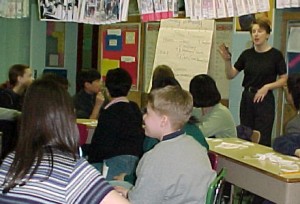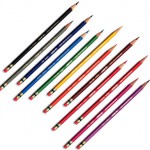The Art of Negotiable Contracting

It may have the sound of being more than it really is, but negotiable contracting is indeed an art. While not immediately evident to the casual observer, it is practiced with a deftness and precision comparable to an artist applying a brushstroke to a canvas. We already know that students perform at higher levels if they have ownership of their work. But the finishing touch to this grand design is to create an atmosphere of achievement and accomplishment where the students can take pride in having fashioned their own formula for assessment. Students work with the teacher, like an artists’ collaborative, to piece together the criteria for the assessment of a particular project or assignment through negotiable contracting. The ideas should come from the students’ side of the classroom, making the assessment truly authentic to the task, as the teacher adroitly avoids the pitfalls of manipulating or imposing the criteria.
The negotiable contracting process is easy to implement, but it requires flexibility on the part of the teacher. Negotiable contracting is suitable when long-term projects are assigned that require designing rubrics. The teacher will already have fashioned a list of requirements and expectations well ahead of time, to be utilized purely as a guide and not a “set of laws chiseled in stone.” The teacher who avoids intractability and exhibits a degree of pliancy will get the best results from the class.
The process can be easily implemented in a few short steps. It is important that the teacher and the students discuss the project – term paper, lobbying activity, discussion, play, art form – and what is expected. The students are told they will decide on how the project will be graded, and the procedure can be presented to them in the following manner:
“I want you to put yourself in my place. You are the teacher. What are the criteria you would look for in this project that would receive the highest grade? Working in your cooperative groups, generate a list of standards or criteria that you as a teacher would use for grading purposes. We will examine them together and make a list that we can all agree on as the criteria of assessment for this assignment.”
The teacher calls on one speaker at a time from each group. The individual acting as a spokesperson for the cooperative group will submit one criterion to be listed on the board. The teacher will utilize active listening for this phase of the activity, meaning that students are required to listen to one another and check off each item on their own list if another group has already mentioned it. This avoids wasting time, so the class doesn’t have to hear the same idea being repeated. The teacher charts the criteria on the board. After all of the groups have been given the opportunity to submit their ideas, the students can discuss them.
It might happen that the teacher has a criterion that was not posted on the board that is essential to a fair and equitable assessment of the project being assigned. If that is the case, the teacher should explain in detail the additional item being added to the list, and why it is so important.
After the students have exhausted all their ideas, they work in their cooperative groups and prioritize their top 5 favorites. Once again, the teacher calls on the speaker for each group, having the student submit his or her group’s first choice. The teacher charts the information, again utilizing active listening so that ideas are not repeated needlessly. As each item is posted on the chalkboard, the teacher asks how many other groups had that particular criterion on their top 5 listings. The teacher makes a checkmark next to the criterion to note its priority among all the cooperative groups.
Once the list is completed, the teacher checks which criteria were heavily weighted and which were not. It is recommended that four or five criteria be selected to formulate the rubrics. More than that number might overwhelm the students and is not necessary. The students should feel that they can accomplish the work that has been assigned, and made aware that they are not being confronted by an insurmountable task.
At this point, the teacher may use A Rubrics Bank for Teachers. The criteria can be easily cut and pasted to form the rubrics. If time permits, the teacher can submit one criterion to each cooperative group so that the students can design the wording for the rubrics. Students might also be permitted to use their own terms for the linguistically-based descriptive scale listed from left to right across the top of the rubric chart. Not only does this step give the students a feeling of ownership; it is also the last phase of negotiable contracting.
We hope that the bank of rubrics will be used as a guide, and not serve as the definitive answer for teachers. Many times when we use the bank for our own purposes, we have to modify some of the descriptions to suit the task or project at hand. It is the modification process that lends a degree of authenticity to the rubrics, for it is modified and changed specifically for an intended purpose and task. The guide can serve as a foundation and guide for the rubrics, but the final individualized shaping and wording makes for a lighter, more bearable burden that the teacher so often assumes.
If you would like a copy of the rubric bank, please email us on the contact page.
*** A word of caution: Generating criteria of assessment is excellent for any discussion, debate, simulation, or project. However, spending the time to generate a rubric should be made for project-based learning or long-term projects that take a least a week to complete.
© 2000 by Andi Stix, Ed.D.(A modified version was published by AGATE‘s GEMS: Fall 2000)

In what ways do your students feel empowered when they have a voice in the assessment process? For what reasons does the process of negotiable contracting allow the assessment the be more authentic to the task?
Andi Stix is an educational consultant & coach who specializes in differentiation, interactive learning, writing across the curriculum, classroom coaching, and gifted education. For further information on her specialties or social media, please email her on the Contact page.





